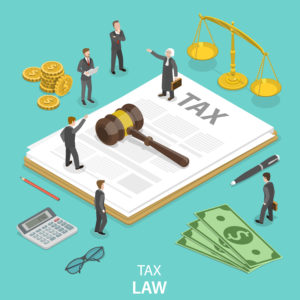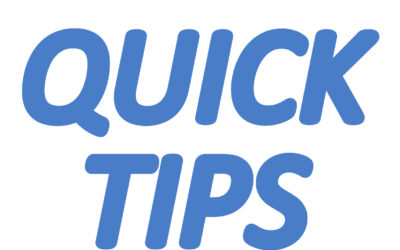The New Tax Deduction 199A
Over the past few weeks I’ve had several conversations with clients who work professionally in the healthcare field as we review projections of their potential 2018 tax liability. In particular, I’ve spoken with several clients who work as therapists regarding the implications of the new Section 199A tax code that might allow them to exclude up to 20% of the net income they earn from their practice from taxation. Most of the people I talk to are familiar with the new code section, and I thought I might give it a quick overview to help bring awareness to this deduction that can be maximized in certain situations if planned for accordingly.
The good news is that the 199A deduction will provide big tax breaks for many business-owning clients. At first glance, 199A seems to be pretty straightforward. In general, it provides a deduction equal to the sum of 20% of the income from businesses that meet certain parameters.
However, first glances can be deceiving. The Tax Cuts and Jobs Act of 2017 was supposed to provide tax simplification. However, with regards to 199A, it is full of phase-outs, phase-ins, threshold limitations and ill-defined terminology. If you want to see what the code section looks like in all its glory, you can check it out here: https://www.law.cornell.edu/uscode/text/26/199A It may take some time before the IRS can provide meaningful guidance on how it will be applied. In the meantime, many are wondering just how this new provision might impact their 2018 taxes.
The Tax Cuts and Jobs Act of 2017 ushered in what many consider to be the biggest changes to both individual and corporate income taxes since Reagan’s 1986 Tax Reform Act.
The 199A deduction, which is a reference to the new section of the tax code that introduces a 20% deduction on qualified business income for the owner’s qualified businesses that operate as pass-through entities.
To make it a little easier to understand, we should probably define a few things:
Qualified Business Income (QBI) – the net amount of income, gain, deduction, and loss with respect to any qualified businesses of a taxpayer that is structured as a Pass-Through Entity
Qualified Business – Any business other than a Specified Service Trade or Business
Pass-Through Entities – Includes S Corporations, limited liability companies, partnerships, disregarded entities (single member LLCs), multi-member LLCs, sole proprietorships (a sole proprietor is typically someone who files their business return on Schedule C of their 1040) and a few other entities that don’t apply to most people
Specified Service Trade or Business (SSTB)– Generally speaking, an SSTB includes businesses that perform services in certain fields, including: health, law, accounting, Actuarial science, performing arts, consulting, paid athletes, and anyone like me who works in financial services. But wait, there’s more!! Here is the hammer… an SSTB includes “any trade or business where the principal asset is the reputation or skill of 1 or more of its employees”. For small business owners, and in particular therapists, this provision more likely than not classifies you as an SSTB.
Rather than review the 199A rules for businesses that are considered Qualified Businesses, I’d like to review how section 199A applies to SSTBs.
So I’m not a qualified business, but rather an SSTB, am I excluded from taking the deduction?
If you are considered an SSTB, it does not mean that you will not be able to claim the deduction, it just means that your ability to do so may be more restricted. In particular, for SSTBs, they are subject to income limitations. However, it is possible that with proper planning you might be able to maximize your deduction if you find yourself within the cross-hairs of the phaseouts and limitations.
Generally speaking, what are the income limitation for SSTBs?
If you are classified as an SSTB, an income limitation may impact your ability to claim the deduction. Business owners below their applicable threshold amount – which is $157,500 of taxable income for all filers except joint filers, and $315,000 for those filing jointly – are able to enjoy the QBI deduction for the lesser of 20% of their qualified business income or 20% of their taxable income. For business owners above the applicable threshold amount, which comes into play if your income exceeds $157,000 (for individuals, or $315,000 for married filing jointly), the exclusion of 20% of the SSTB income will begin to phase out. For those filing their returns as individuals, the deduction is phased out if your income reaches $207,000 (it phases out between $157,000 and $207,000) and for those filing as married filing joint it phases out if your income exceeds $415,000 (it phases out between $315,000 and $415,000 of income).
Section 199A is very involved and there is the possibility of a very significant understatement penalty if you get it wrong, so make sure you get it right. Congress anticipated potential attempts to manipulate the qualified business income calculation and has directed the Treasury to prescribe regulations that are necessary to carry out the purposes of the Act. Further, the act appears to lower the standards for assessing a penalty of substantial understatement of tax from a 10% standard to 5%, which is designed to curb abuse.
In summary, perhaps the easiest starting point to at least begin the conversation to see if you might be eligible for the new 199A might be to see if you answer yes to the following question:
Question: Do I operate my business as a sole proprietor, LLC or S Corp?
If you answered yes to this question, then we should probably talk to see if you are maximizing your 199A deduction.
So what can be done to maximize your 199A deduction?
The primary objective here is to stay below the threshold where SSTB and wage tests kick in. The answer to this question begins with understanding where you expect to be in connection with the applicable phase-outs and limitations and then considering what actions might be taken to optimize the result. When the phaseouts come into play, most often we look at increasing expenses such as making larger retirement plan contributions, purchasing needed furniture, equipment and other business assets before year end, reviewing your compensation model, spreading income out to multiple taxpayers or even the changing of entity.
The Bottom Line on the 2017 199A
This is an extremely complicated piece of legislation, with lots of new definitions, exceptions, exceptions to those exceptions, etc. That means that even the IRS hasn’t figured it all out yet. The IRS will publish new policies and rules over the coming months (and possibly years), and tax advice will continue to evolve as a result. Furthermore, new tax laws effective for 2018 which include new limits for certain itemized deductions (state income taxes, property taxes and DMV fees limited to $10,000), changes to the standard deduction as well as the elimination of the meals and entertainment deduction might have a material impact on your 2018 tax liabilities.
The above information is intended to be a snapshot of the new tax law. It is not tax advice for any individual or business but can serve as a starting point in understanding the most significant changes that might affect your practice and hopefully encourage you to evaluate how you might maximize your tax planning opportunities before the year ends.
Scott Colton, CPA/PFS, MS-Tax
Ready to get started? Let's schedule an intro meeting!
Six Financial Best Practices for 2019
Six Financial Best Practices for 2019 So, are you ready to get a jump on 2019 Here are six financial best practices for the year ahead. Pick a few of them or take on the entire list. Either way, you’ll be that much further ahead by the time 2020 rolls...
What to know about possible new max contribution limits to your retirement accounts
What to know about possible new max contribution limits to your retirement accounts Author: Josh Colton October... break out the pumpkin scented candles, stock up on candy, pick out a Halloween costume and, oh ya, don’t forget the best part - every...
A Focus on Fixed Income
A Focus on Fixed Income It’s been approximately a decade since the Great Recession began. By year-end 2008, the U.S. Federal Reserve (the Fed) had lowered the target federal funds rate to near-zero and embarked on an aggressive quantitative easing...




